From 1974 to 1986, an ex-cop named Joseph DeAngelo terrorized California as the Golden State Killer — and lived a normal family life for decades before being caught.

FBIFrom 1974 until 2018, California authorities couldn’t identify the predator known as the Golden State Killer — then they finally caught Joseph James DeAngelo.
Identifying the Golden State Killer, a predator who brutalized untold dozens of victims across California in the 1970s and ’80s, was a decades-long challenge. Initially known as the East Area Rapist and the Original Night Stalker, his crime spree began in 1974 and is believed to have ended in 1986, by which time the Golden State Killer committed at least 13 murders and 51 rapes.
For years, the widespread geography of the crimes suggested that there were separate predators behind them. His crimes stretched across many counties in California, with a cluster in the north and a series in the south.
The Golden State Killer thus eluded authorities for decades, and even taunted past victims with threatening phone calls until at least 2001.
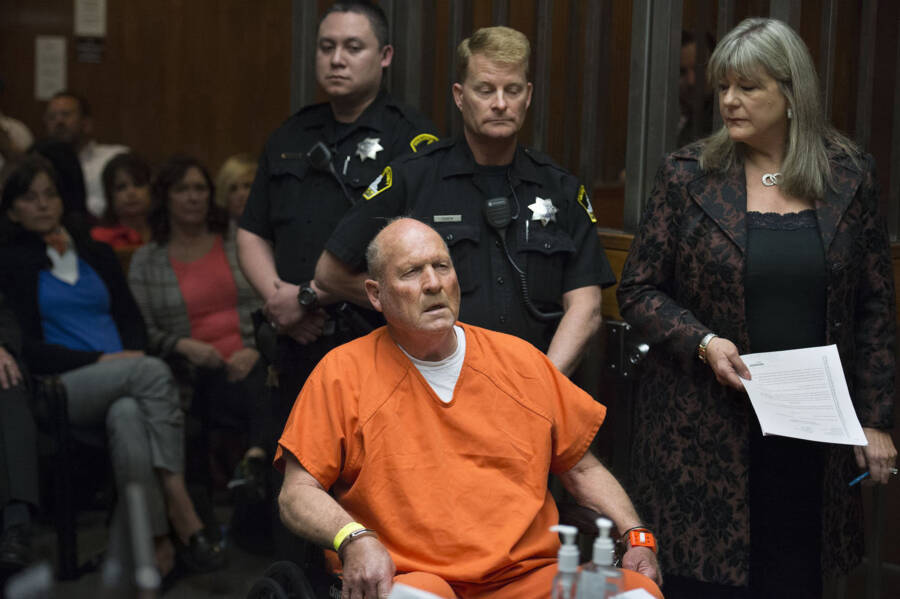
Randy Pench/Sacramento Bee/Tribune News Service/Getty ImagesJoseph James DeAngelo being arraigned in a Sacramento courtroom in April 2018, just after his arrest for the Golden State Killer murders.
Only a 2016 reinvestigation centered on DNA evidence, which was virtually nonexistent during the 1970s and 1980s, spawned a promising new lead. Thanks to true crime author Michelle McNamara’s attention to detail and the tireless efforts of California authorities, resolution finally arrived.
On April 24, 2018, former police officer Joseph James DeAngelo was charged with the crimes of the Golden State Killer. He has since pleaded guilty to 26 charges involving rape and murder. Though the statute of limitations for the many rapes he’s accused of have expired, he still received a total of more than 12 life sentences for his crimes in August 2020.
Finally, the Golden State Killer’s victims can at least know that Joseph James DeAngelo will never walk free again.
The Golden State Killer’s First Crimes As The “Visalia Ransacker” And “East Area Rapist”
Before raping and murdering his targets, the Golden State Killer was believed to be a burglar who ransacked at least 100 homes in Visalia, California between April 1974 and December 1975.
Unfortunately, this also appeared to have served as a training ground for the man, then known as the Visalia Ransacker, as it’s believed he also committed a murder during this period.
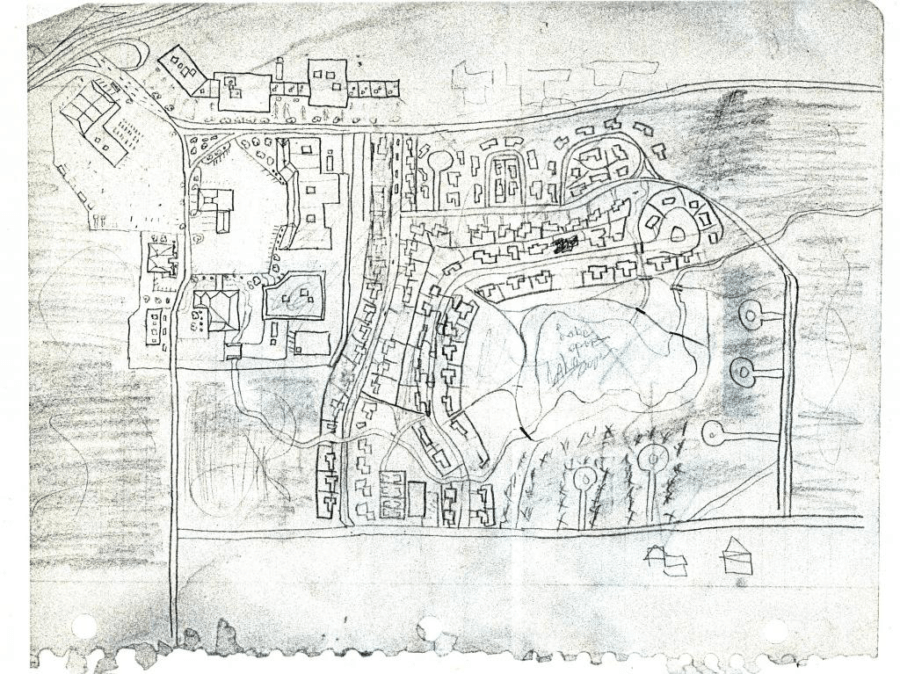
Wikimedia CommonsA neighborhood map with the word “punishment” misspelled on the back was found during the Original Night Stalker investigation.
In the beginning, the Visalia Ransacker mostly broke into the homes of his victims to simply rifle through their possessions. He commonly scattered women’s underwear around the house, stole small items as souvenirs, and actively ignored major valuables in plain sight.
Unfortunately, the robber and one-time killer soon allegedly became a prolific rapist. The ransacking from 1974 to 1975 no longer seemed to satisfy him. By the following year, citizens of California began to anxiously whisper about the one they called the East Area Rapist. At the time, no one could’ve guessed that he was the same man as the Visalia Ransacker.
But his experience in burglaries certainly came in handy. When approaching potential rape victims, the Golden State Killer preferred single-story homes, typically near escape routes like large fields or forests. The East Area Rapist began to terrorize Northern California in 1976.
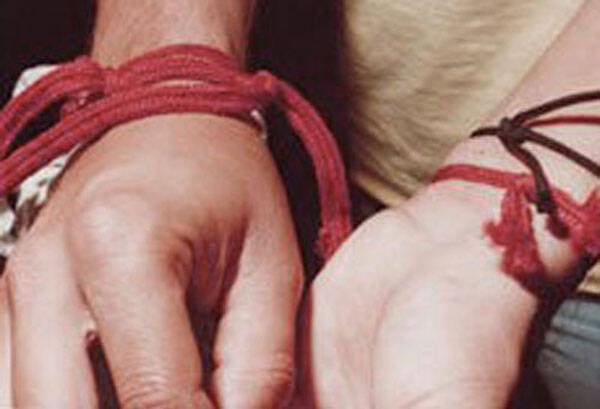
GoldenStateKiller.comThe Golden State Killer either brought his own ligatures made of shoe lace or used cords from the victims’ homes.
Joseph DeAngelo often broke into homes beforehand, after conducting lengthy surveillance of his victims in order to memorize their routines. Inside, he’d unload any guns he’d find, unlock windows, and leave ligatures used to bind his subjects laying around for later.
He began with single women or ones with small children, but eventually moved on to couples. His victims typically awoke to the glare of a flashlight, and a masked gunman in their faces. After tying up the man, he’d rape the woman repeatedly.
Sometimes, the Golden State Killer stacked dishes on the man’s back and threatened to murder the couple if they fell off during the rape. During these macabre evenings, he sometimes ate food and drank beer in the kitchen. Some of the traumatized victims thought he’d finally left, only for him to “jump from the darkness” and continue.

Sacramento County Sheriff’s DepartmentJust one of countless pages of documentation that the Sacramento County Sheriff’s Office had on the elusive East Area Rapist.
On the rare occasion when neighbors or police spotted the masked man, he eluded capture by scaling fences or taking off on a bicycle. Whoever he was, the man was clearly fit enough to escape. Tragically, this only helped the Golden State Killer commit more murders down the line.
The Original Night Stalker’s Crime Wave Begins
By 1978, the Golden State Killer had committed his first two known homicides in Northern California. The victims, Brian and Katie Maggiore, likely witnessed him breaking into a home while he was still known as the East Area Rapist.
But the man did not gain a reputation for murder until he moved his crime spree to Southern California from 1979 to 1986. Since it was a different type of crime and location, the East Area Rapist was not linked to the Southern California series of attacks.
The press dubbed this seemingly separate killer the “Original Night Stalker,” meant to differentiate him from the “Night Stalker” serial killer Richard Ramirez who haunted the Los Angeles area in the 1980s.
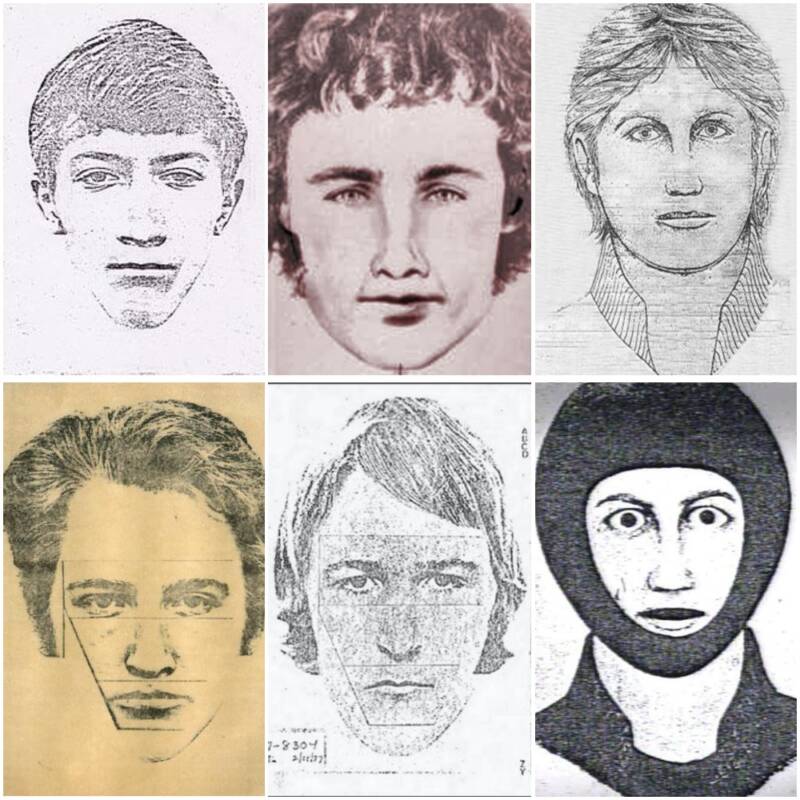
Wikimedia CommonsSketches of the East Area Rapist and the Original Night Stalker, based on statements from survivors.
As for the Original Night Stalker, at least 10 people were killed at his hands throughout his spree between 1979 and 1986. At many of the crime scenes, signs of binding or ligatures were discovered.
Briefly, this new killer was also dubbed the “Diamond Knot Killer” after two of his victims, Charlene and Lyman Smith in Ventura, were found bound with a diamond knot. This knot was seen as unusual as it was typically used in interior design or for nautical purposes.
Many of the Original Night Stalker’s murders had similar trajectories, though no modus operandi had yet been confirmed. He often tied his victims with ligatures and assaulted them before beating them to death. But sometimes the Golden State Killer just shot them.

Wikimedia CommonsNotebook sheets were found in an area of interest that recounted a sixth-grade classroom experience for the killer.
With imperfect communication between officials in California and no clear motive for all the crimes (let alone the consideration that the East Area Rapist and the Night Stalker might have been the same person), police followed false leads and met dead ends.
False Leads And Dead Ends In Trying To Solve The Golden State Killer Case
Without the help of DNA evidence in a sprawling case of different crimes that detectives thought were committed by different people, solving the Golden State Killer case was like finding a needle in a haystack. It didn’t help that countless pieces of evidence seemed to contradict others.
On the other hand, investigators did have a substantial trove of facts on their hands. From survivor testimonies, it was clear the perpetrator was a white male about 5-foot-9 or 5-foot-10 and athletic in stature. Meanwhile, shoe prints at the crime scenes measured about size nine.
These helpful details, along with the criminal’s behavior, led criminologists to create a psychological profile on the man. They believed he understood the investigative methods of police as well as the concept of evidence. The Golden State Killer was in decent shape and a skilled burglar who hated women.

Wikimedia CommonsA sketch of the Original Night Stalker, one of the many names authorities had for the Golden State Killer over the years.
A poem sent to The Sacramento Bee in December 1977 by someone claiming to be the East Area Rapist was the first promising lead. He called police and said he’d strike on Watt Avenue that night. Police nearly caught a man who fled via bicycle — but he eluded capture.
The next December, pages from a notebook were found near the reported sighting of a suspicious vehicle by investigators working on an East Area Rapist attack in Danville. The pages recounted a “dreadful” sixth-grade experience in which a boy was forced to write sentences repeatedly.
There were also phone calls — spanning from 1977 to 2001 — in which a man claimed to be the East Area Rapist and taunted investigators and victims. “You’re never gonna catch me,” he told the police.
Perhaps most horrific were the calls the Golden State Killer made to surviving victims, wishing them a Merry Christmas, calling them whores, and threatening to kill them.
Nonetheless, each promising lead turned out to be fruitless. Brett Glasby from Goleta was a suspect of Santa Barbara County investigators — until he died in 1982 before other crimes occurred.
White supremacist Paul Schneider was suspected — until DNA evidence cleared him in the 1990s. Joe Alsip, a friend of victim Lyman Smith, was also suspected until his innocence was similarly confirmed. For decades, finding the Golden State Killer seemed impossible. Only in the new millennium did the tides seem to turn.
Renewed Interest And Fresh Investigations Lead To Joseph James DeAngelo
As recently as 2001, the Golden State Killer phoned one of his surviving victims. Calling 24 years after his attack, he asked the woman, “Remember when we played?”
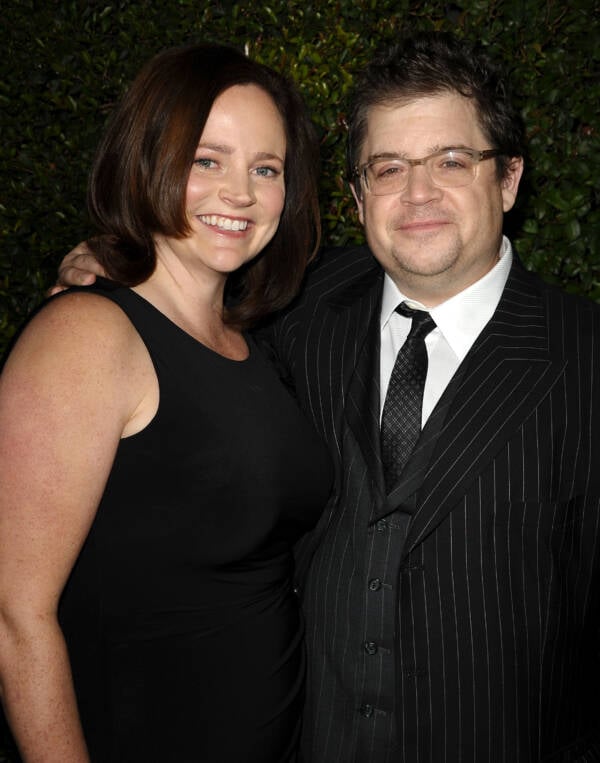
Jason LaVeris/FilmMagicUnfortunately, author Michelle McNamara died of medication issues two years before Joseph DeAngelo was charged. Her husband, Patton Oswalt, helped finish her book on the killer.
This was the same year that DNA evidence began to link the cases in the different parts of California State. In the decades since these sprees, many of the East Area Rapist attacks and Original Night Stalker murders have been linked by DNA.
Renewed momentum came in 2016 when the FBI publicly released a trove of information on the Golden State Killer, including sketches and intricate details about his countless crimes, and announced a $50,000 reward.
The FBI wrote:
“If he is still alive, the killer would now be approximately 60 to 75 years old. He is described as a white male, close to six feet tall, with blond or light brown hair and an athletic build. He may have an interest or training in military or law enforcement techniques, and he was proficient with firearms.
Detectives have DNA from multiple crime scenes that can positively link — or eliminate — suspects. This will allow investigators to easily rule out innocent parties with a simple, non-invasive DNA test.”
Finally, on April 24, 2018, the Sacramento County Sheriff’s Department arrested Joseph James DeAngelo and charged him with 13 counts of murder and several other charges including kidnapping.

Santa Barbara County Sheriff’s OfficeGolden State Killer Joseph James DeAngelo, soon after joining the Exeter Police Department in 1973.
McNamara, who died two years earlier but developed a vital rapport with detectives during her work, wasn’t thanked during the press conference, despite her coinage of “Golden State Killer” being used.
Her bestselling book, which posited DNA would nab the killer, undeniably renewed interest in the case. Former cold-case investigator Paul Holes‘ work with DNA technology certainly helped speed things up as well.
As for Joseph James DeAngelo, a mountain of evidence was stacked against him — but did cops truly catch the real Golden State Killer?
How Joseph James DeAngelo Was Unmasked As The Golden State Killer

Sacramento County Sheriff’s OfficeJoseph James DeAngelo, a former police officer, pleaded guilty to 26 charges.
Joseph DeAngelo’s DNA was obtained from a swab on his car door handle and was matched to DNA taken from victims Lyman and Charlene Smith — who were murdered in 1980. Police used a genealogy website to confirm the match.
Ventura County’s Chief Deputy District Attorney said, “It is our burden to prove this case beyond a reasonable doubt.”
Now that Joseph DeAngelo has admitted to several crimes, there is hardly a doubt in anyone’s mind that he was the one responsible.
Indeed, the Golden State Killer trial quickly ended with Joseph DeAngelo pleading guilty to 13 counts of murder, with additional special circumstances, as well as 13 counts of kidnapping for robbery, on June 29, 2020.
That said, it’s not been confirmed that he’s responsible for every single crime that was ever connected to the Golden State Killer. Some people may also argue that there could have been more than one criminal on the loose during certain time periods.
But in the end, due process has finally brought us closer to the truth. And in August 2020, DeAngelo received multiple life sentences for his crimes. The victims and family members who spoke in court during the sentencing hearings can finally rest in the knowledge that at least the Golden State Killer will never be able to attack anyone else again.
After learning about the Golden State Killer, the serial killer who was revealed to be James DeAngelo, read about his wife, Sharon Huddle. Then, learn about serial killer Edmund Kemper, whose story is almost too disturbing to be real.





